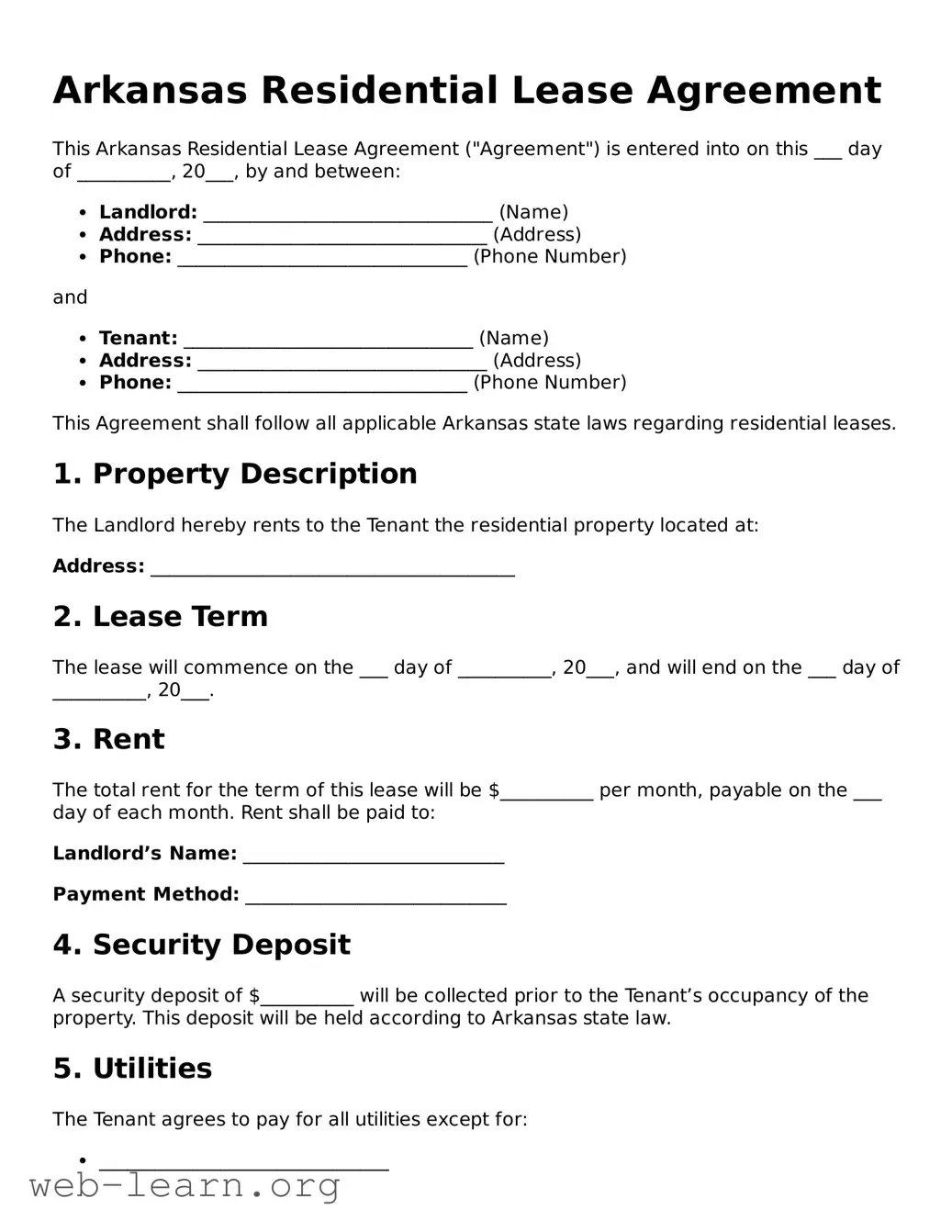Arkansas Residential Lease Agreement
This Arkansas Residential Lease Agreement ("Agreement") is entered into on this ___ day of __________, 20___, by and between:
- Landlord: _______________________________ (Name)
- Address: _______________________________ (Address)
- Phone: _______________________________ (Phone Number)
and
- Tenant: _______________________________ (Name)
- Address: _______________________________ (Address)
- Phone: _______________________________ (Phone Number)
This Agreement shall follow all applicable Arkansas state laws regarding residential leases.
1. Property Description
The Landlord hereby rents to the Tenant the residential property located at:
Address: _______________________________________
2. Lease Term
The lease will commence on the ___ day of __________, 20___, and will end on the ___ day of __________, 20___.
3. Rent
The total rent for the term of this lease will be $__________ per month, payable on the ___ day of each month. Rent shall be paid to:
Landlord’s Name: ____________________________
Payment Method: ____________________________
4. Security Deposit
A security deposit of $__________ will be collected prior to the Tenant’s occupancy of the property. This deposit will be held according to Arkansas state law.
5. Utilities
The Tenant agrees to pay for all utilities except for:
- _______________________________
- _______________________________
6. Maintenance and Repairs
The Tenant shall keep the premises in a clean and sanitary condition. Requests for repairs shall be directed to the Landlord at the address provided above.
7. Early Termination
EITHER PARTY may terminate this agreement with a written notice of at least ___ days prior to the desired termination date.
8. Governing Law
This Agreement shall be governed by and construed in accordance with the laws of the State of Arkansas.
9. Signatures
IN WITNESS WHEREOF, the parties have executed this Agreement as of the day and year first above written.
Landlord Signature: _______________________________ Date: ___________
Tenant Signature: ________________________________ Date: ___________
